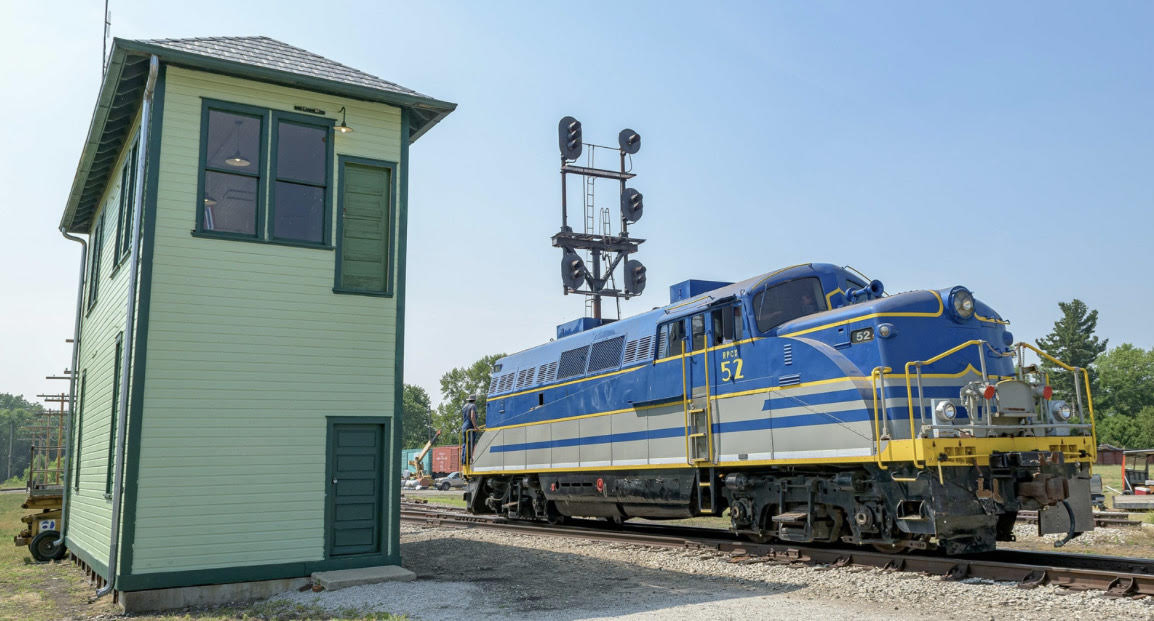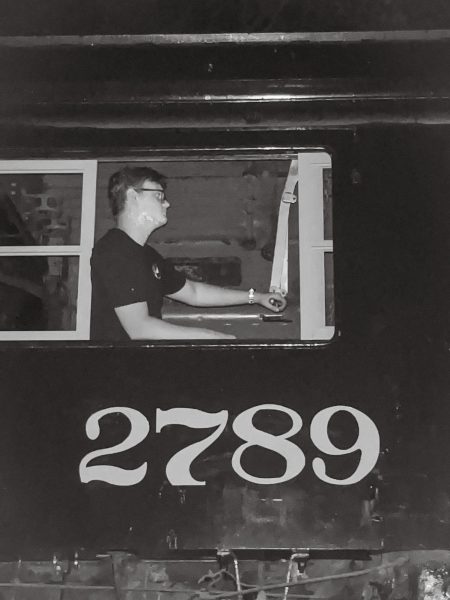In a surprising and heartwarming turn of events, the Hoosier Valley Railroad Museum’s efforts to restore the iconic Grasselli Signal Tower received a significant boost with an anonymous donation of $7000 of matching funds meaning the museum only needs to raise $7,000 from the community. The original cost of the stairs was $38,000 but the museum was able to negotiate a total cost down to $14,000. The Grasselli Signal Tower holds immense historical significance, serving as a testament to the region’s rich railway heritage.The tower was moved to the Hoosier Valley Railroad Museum property in 2009 from the Indiana Harbor Belt Railroad to save it from demolition.
The donations will be used to build stairs for the outside of the tower to open up the tower for public viewing and much of the other work on the tower has been completed. The tower will be open for public viewings and guided tours once the stairs are constructed. The interior of the building is already fully cleaned and restored. Recently the exterior of the building was painted by Steve Newland. Newland and other volunteers have been working on the tower in preparation for the stairs’ arrival. The donations received were amazing to Newland.
“I was amazed and grateful for the generous match. It will help greatly towards the restoration process,” Newland admitted.
With this donation the museum can steamroll the process of making the tower open for the public.
As the Hoosier Valley Railroad Museum embarks on the next phase of the Grasselli Signal Tower’s restoration, it does so with renewed determination and gratitude, knowing that the generous contribution of an anonymous donor has propelled them closer to their goal of preserving history for generations to come. As of August 20th the museum has raised $5,145 of the $7,000 goal. After the stairs are brought to the museum they will be painted and installed on the tower by museum volunteers. With this completion it will give the museum a new exhibit that can be explored by the public and will offer a new experience for visitors to see how railroads were ran in the days before technology.










